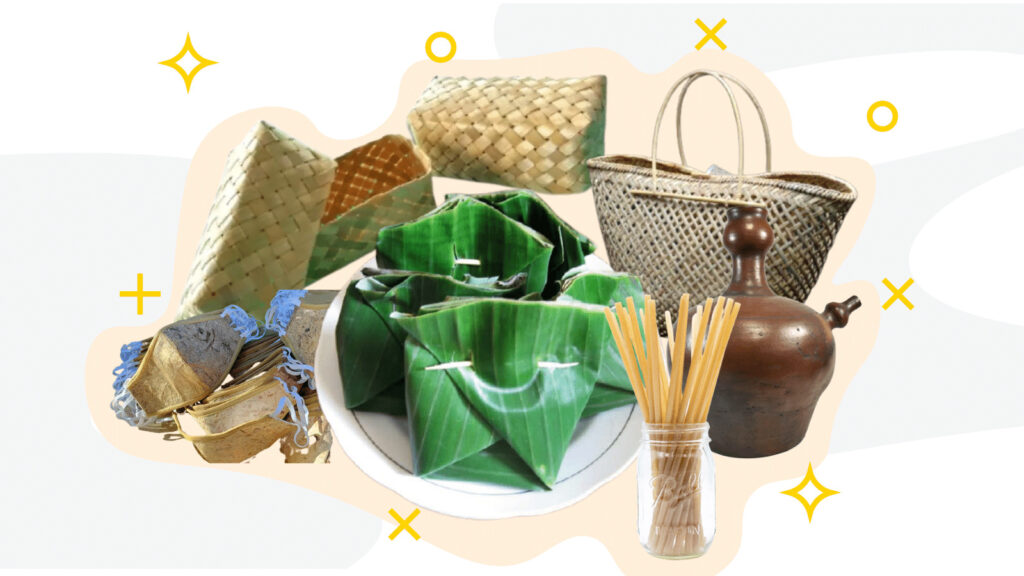In our plastic-filled world, cut down our plastic use can be challenging sometime. These natural alternative packagings from around Asia could help our plastic-choked planet.
1.3 billion plastic bottles are sold daily around the world. And that’s just the tip of the fossil-based plastic iceberg. And that’s just the tip of the fossil-based plastic iceberg.
Petroleum-based plastics dominate the market because they’re durable, light-weight and cheap, but most of them can’t be recycled or reused. Of the 6.3 billion tons of plastic waste produced between 1950 and 2015, only 9% was recycled. The rest of it ended up in landfills, was incinerated or, all too often, landed in the ocean. The ocean has become a repository for an increasing quantity of plastics and microplastics.
RELEVANT SUSTAINABLE GOALS



The Bigger Problem with Biodegradable Plastics
The first ever synthetic polymer was invented way back in 1869 by John Wesley Hyatt as a way to replace the use of natural resources such as wood, metal, stone and bone. In 1907, Leo Baekeland invented Bakelite, the first ever plastic that relies on synthetic materials and not on any natural produce. The use of plastic as single-use containers, then stems from the rise of its demand during World War II. Unfortunately, the original purpose of plastic has now backfired, as the easily-procured, highly flexible and durable materials now often holds one-time-usages rules and quickly fill up our land and oceans, choking the world with non-biodegradable filth.
Since then, a raft of new biodegradable plastic innovations is starting to catch up. Unfortunately, most biodegradable plastics don’t break down in home composts, landfills, or loose in the environment. Most require industrial composting facilities, which aren’t always available to the average consumer. In fact, biodegradable plastics can also contaminate municipal recycling programs when people unknowingly add them to their recycling.
Biodegradable plastics also still contain significant amounts conventional plastic. It is designed to decay at the temperatures above 50°C with intense sunlight. When biodegradable plastics enter the ocean, it behaves very similarly to regular plastics because the conditions required for biodegradation are very unlikely to occur. So, while technically they are biodegradable, the conditions under which the plastics will biodegrade are so specific that it is unrealistic to think of this as a viable solution to the plastic pollution problem.
What, then, is the solution to this environmental catastrophe?
Embracing Alternative Plastic Materials From Around Asia
Asia is such a huge continent and one with diverse cultures and indigenous knowledge. Each culture has different practices and traditions in doing even the simplest of day-to-day life. A lot of these practices actually end up understanding the environment around us and as such, ends up being much better alternatives to even the ones we have today.
Here’s a look at seven alternative plastic materials around Asia that could be the solutions for our plastic-choked planet :
Besek : This traditional wrappings made from organic materials such as bamboo leaves, palm leaves. Besek is a traditional bamboo basket popular in Indonesia. This material is not only affordable in most places, it’s also 100% biodegradable, naturally pest resistant, and highly renewable.
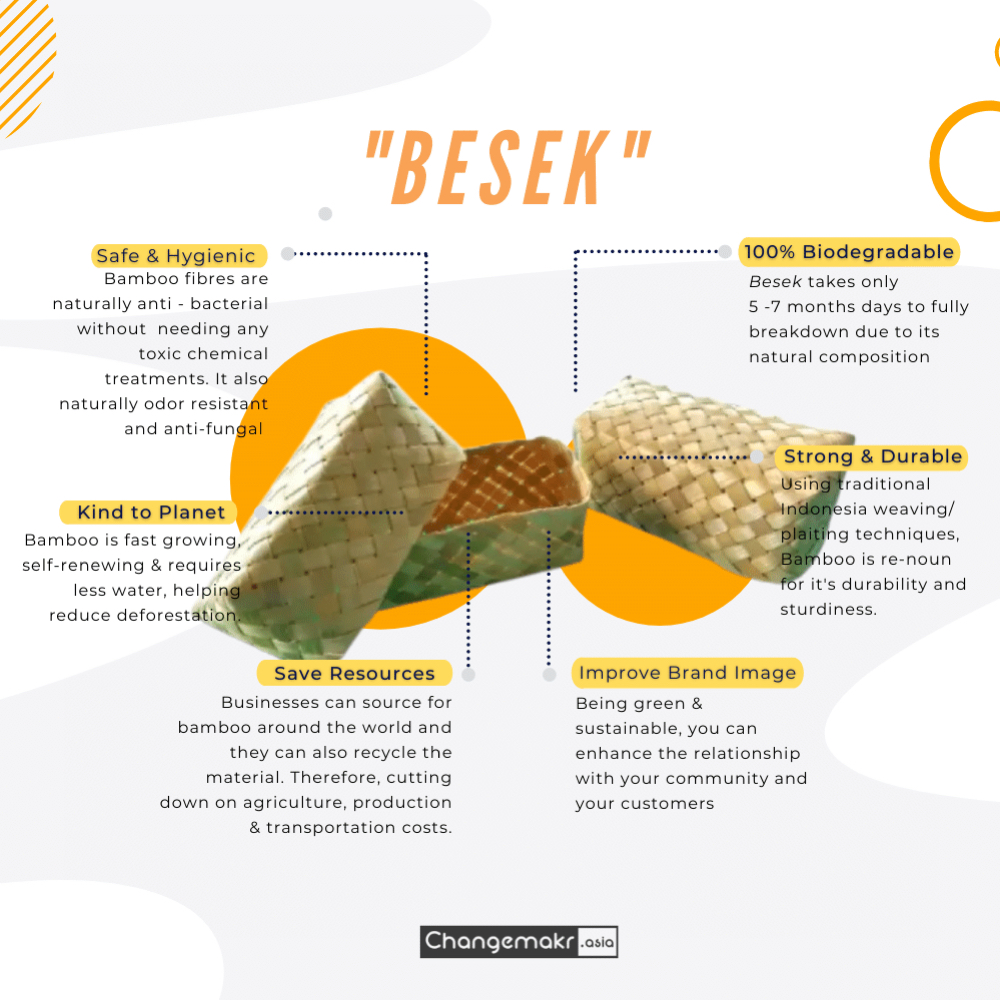
Banana leaves : Around Asia, banana leaves have always used for food packaging. Banana leaves are hardy, water-tight, and clean. It is also one of the largest crops in the world, so banana leaves are readily available. Many ancient, cultural cuisines were wrapped in banana leaves for storage. These thick, glossy leaves hold moisture in and don’t easily degrade, thereby making them a perfect food saver.
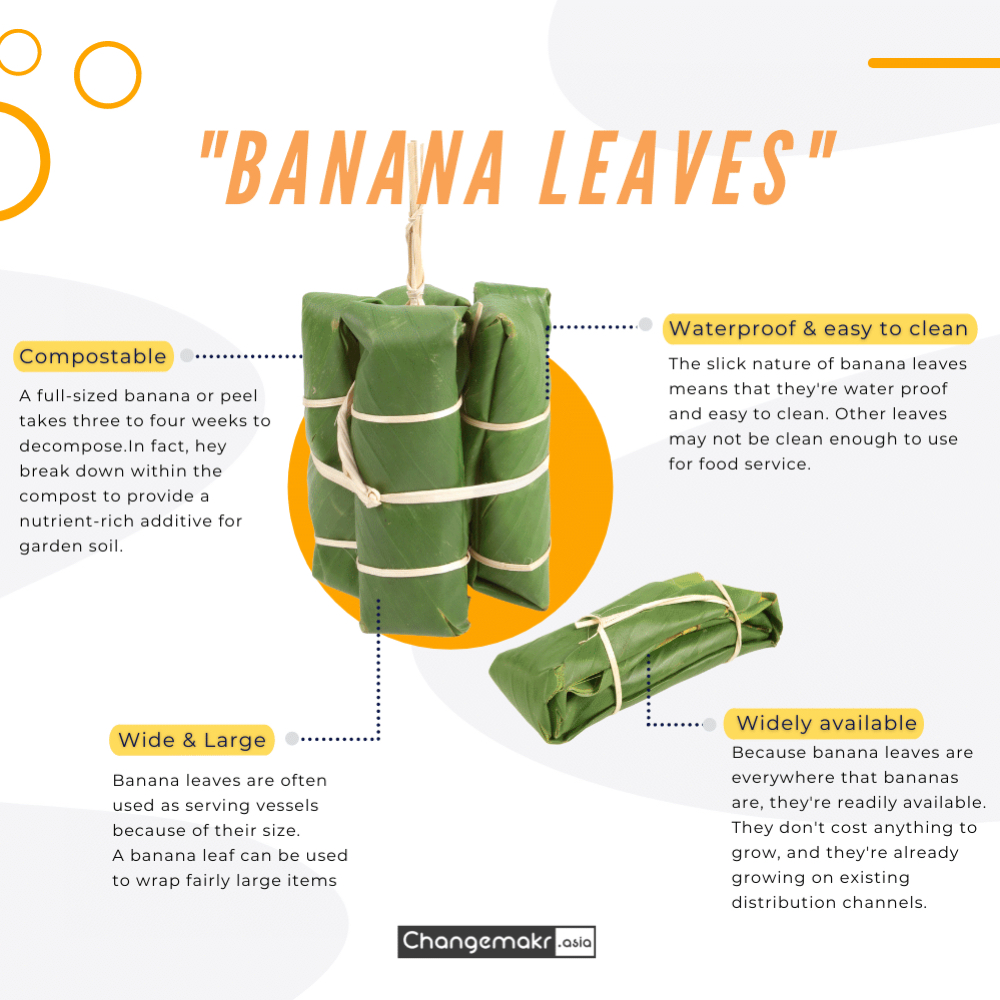
Sugarcane straws : Sugarcane straws are compostable and made with 100% plant-based ingredients using real sugarcane that will grow back over time. Sugarcane straws made by employing the principles of a circular economy. Sugarcane Straws are made of leftover sugarcane fibers, known as bagasse, and binders such as polylactic acid (PLA) which derived from sugarcane and cassava.
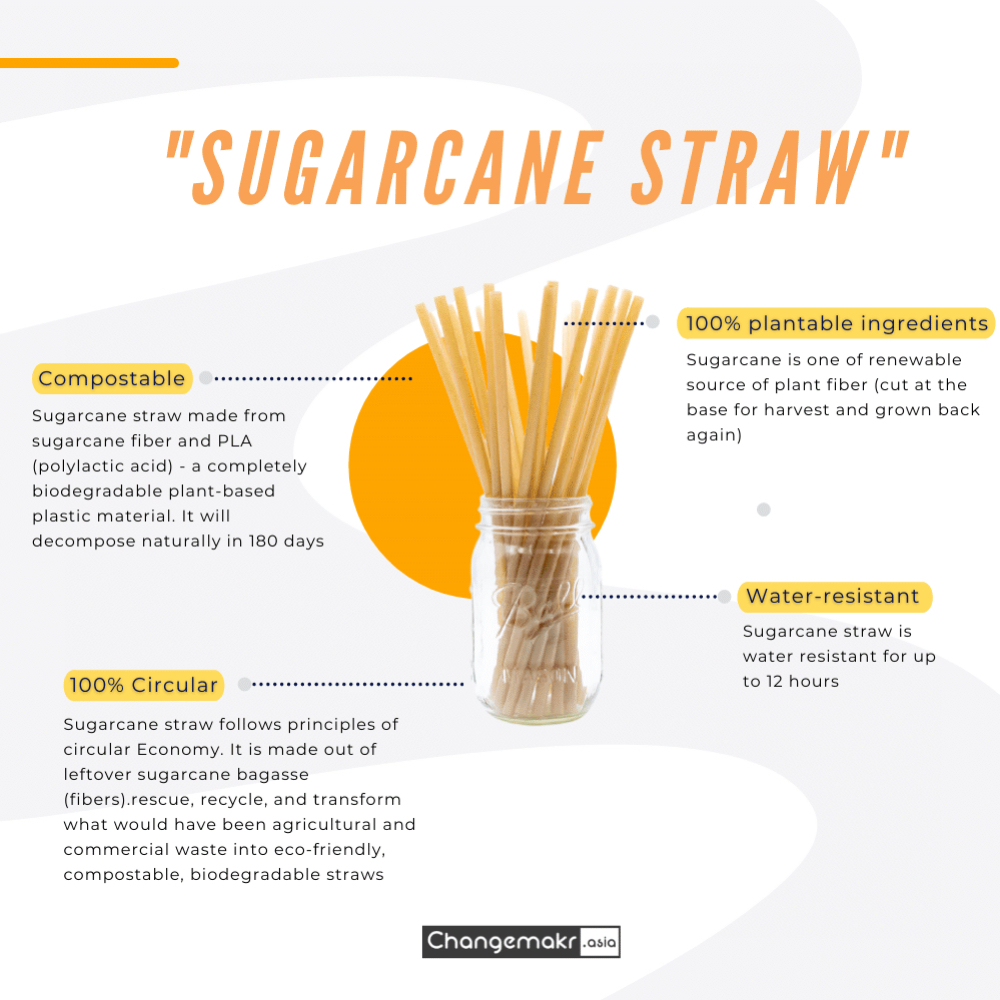
Abaca mask : These disposable masks are made from all natural raw abaca fibers ; the same fibre that commonly used the Philippines to make things like teabags and Philippine peso banknotes. As reported by Bloomberg, abaca is as strong and durable as polyester — but unlike polyester, it can decompose in just two months.
Recent studies by the Philippines’ Department of Science and Technology (DOST) show that abaca-based face masks have a filtration rate 7x better than cloth masks and have a lower water absorption rate. An abaca face mask is more water resistant than a commercial N-95 mask due to its pore size that ranges from 10 to 70μm, nearly as good as a standard surgical mask.
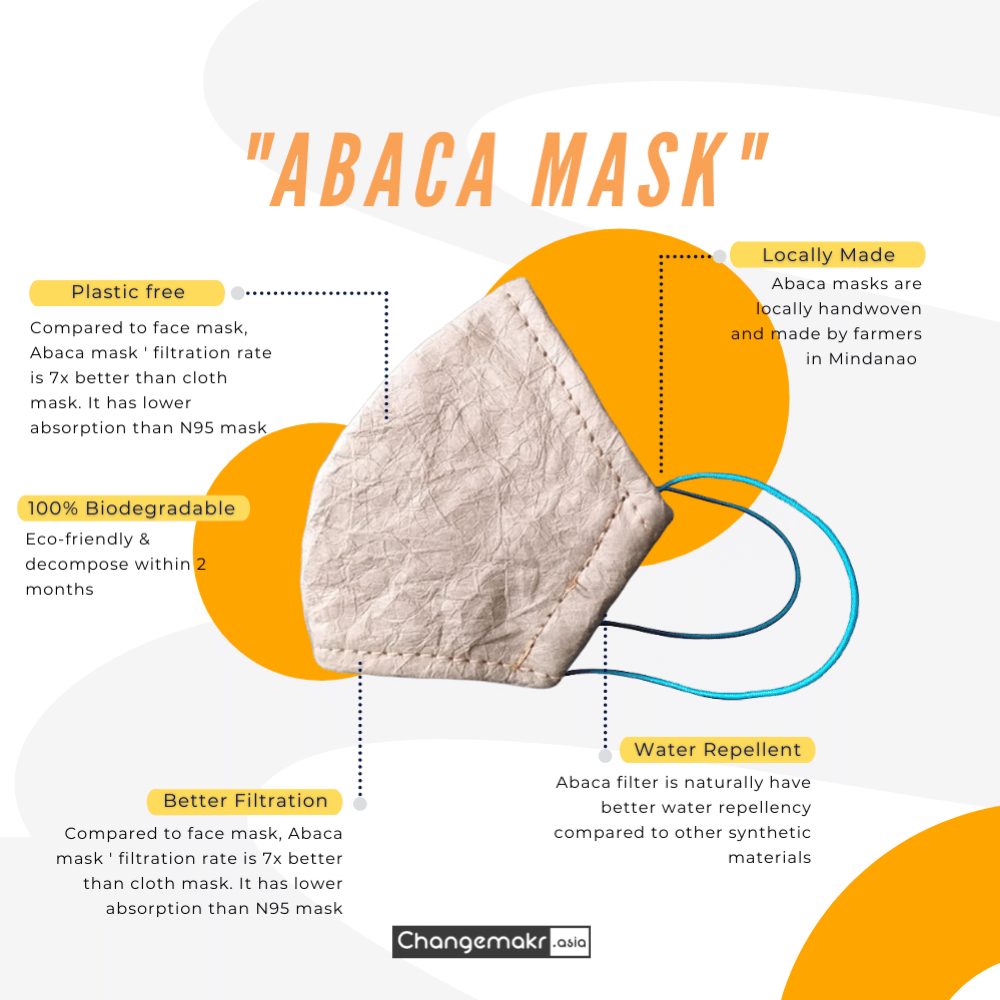
Wicker basket : Traditional wicker basket is made from plants such as bamboo, rattan, seagrass or hyacinth. The bamboo plant is extremely easy to grow and is good for the surrounding environment. Referring to the ancient Chinese history, it is noted that during the Shang Dynasty (6th – 11th century BC) people were already using bamboo in their daily lives – food, clothing, housing, transportation, musical instruments and even weapons. Bamboo is one of the strongest and extremely resistant ; won’t wear out as fast as cotton. Similarly, rattan is the name for 600 hundreds types of vines from Asia. Rattan can be harvested sustainably, and it reduces the stress on forests.
Using these alternative materials reduces the reliances on timber, cotton and water. Producing baskets with bamboo, rattan and other sustainable materials not only lowers the products ecological footprint, it is means creating a functional and chic products.
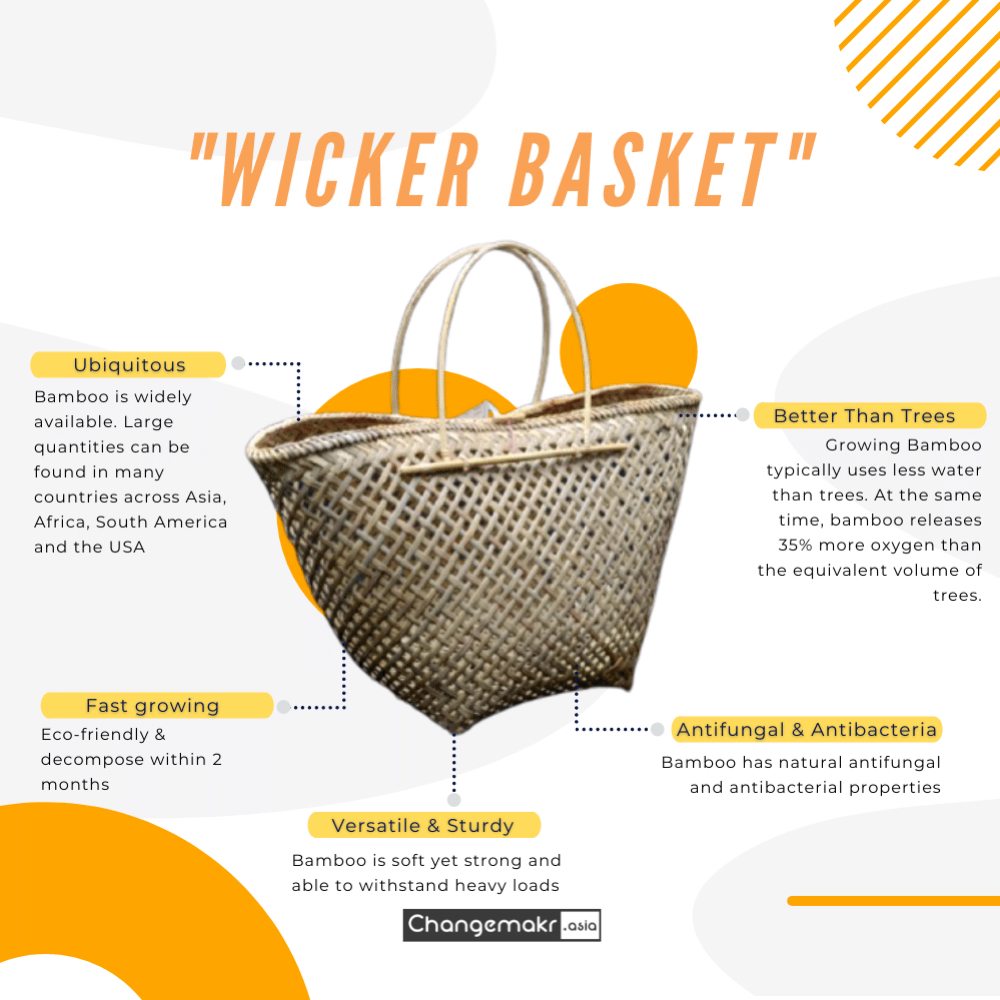
Clay Jug : As an abundant and natural material, clay is sustainable. The concept of drinking water from clay jugs is not new but an old and traditional concept. The clay jugs are power-packed with numerous benefits.
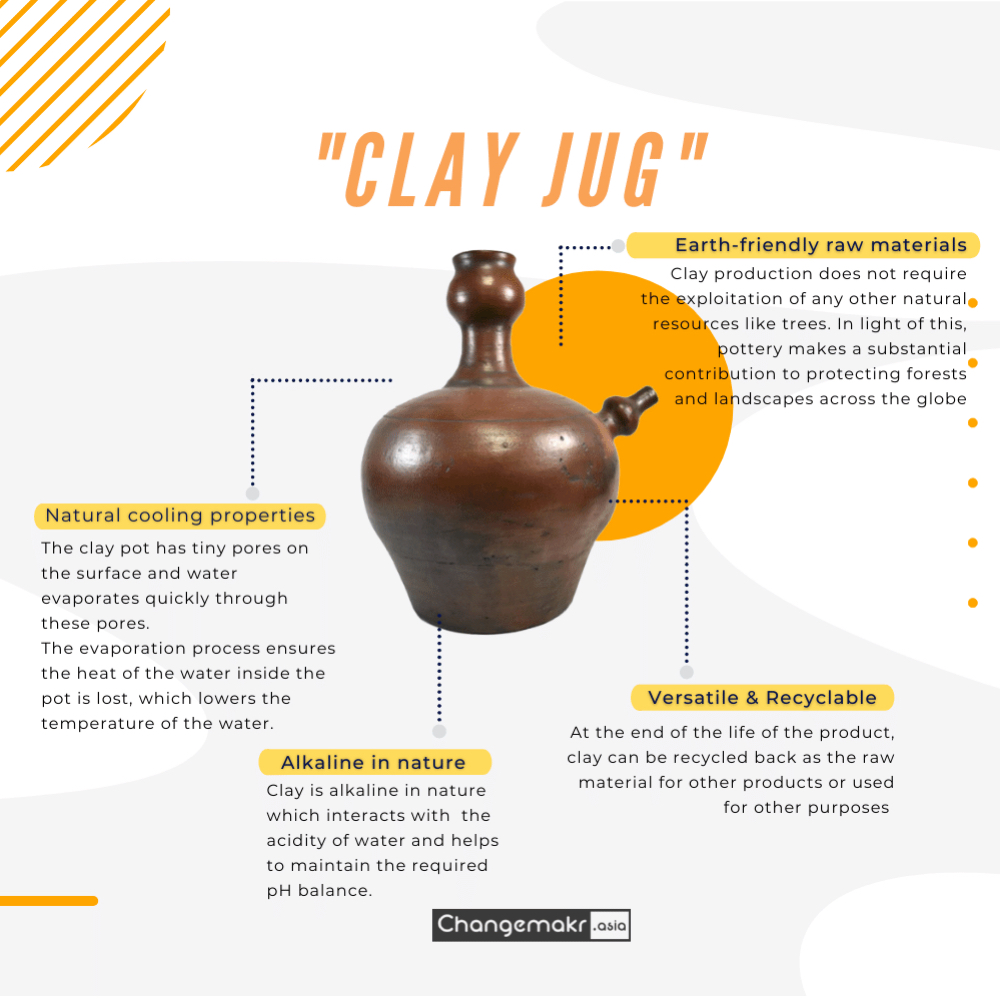
Copper bottle : Copper containers have been used for centuries in countries around the world (example : India) that lack a good sanitation system in order to help prevent water-borne diseases.
Copper is well-known for its anti-bacterial and anti-inflammatory properties. In fact, recent studies have shown that storing water in a copper vessel can decrease the risk of bacterial contamination in water, including by fighting E. coli and S.aureus, two bacteria that are commonly found in our environment and are known to cause severe illnesses in the human body.

All in all, new doesn’t always mean better, many age-old traditions and materials can still be applied to this day. Do you agree with me ?


